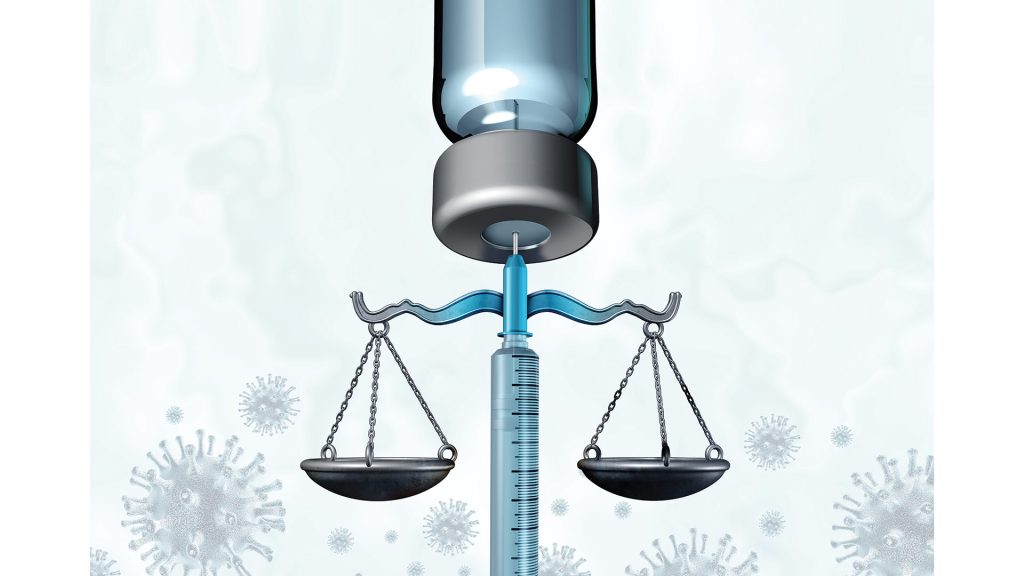
Here’s What Businesses Need to Know About Vaccination Mandates
President Biden’s COVID-19 Action Plan
President Biden has issued a comprehensive plan that orders employers with 100 or more employees to mandate vaccination for their workers and requires other groups of employers to do the same. The clock is ticking on these orders, and there are many unanswered questions as well as lawsuits filed. Here’s what business owners and managers need to know.
By Marylou Fabbo, Esq. and John S. Gannon, Esq.
Last month, President Biden issued a bold new action plan aimed at attacking COVID-19 and fighting the dangerous Delta variant. The plan orders employers with 100 or more employees to mandate that their workers get vaccinated. Similarly, the president’s plan requires the following groups of employees to be vaccinated: those working on federal government contracts (or subcontracts), healthcare workers, and federal government workers.
Not surprisingly, many businesses and politicians are unhappy with these mandates, and one state has already filed a lawsuit against the Biden administration challenging the plan and asking the court to declare it unconstitutional. Here are some takeaways for businesses as they prepare for the novel vaccine mandate.
Biden Administration Mandates Vaccinations
On Sept. 9, the president announced steps that his administration is taking to boost the economy by reducing the spread of COVID-19. One step is called “Path Out of the Pandemic: President Biden’s COVID-19 Action Plan” (more information can be found at www.whitehouse.gov/covidplan).

Marylou Fabbo

John S. Gannon
The action plan directs the U.S. Department of Labor’s Occupational Safety and Health Administration (OSHA) to issue an emergency temporary standard (ETS) that requires all employers with 100 or more employees to ensure their workers are either fully vaccinated or get tested weekly for COVID-19. Employers will also be required to provide paid time off to employees to get vaccinated and recover from any side effects from the vaccine.
The Biden administration estimates this will impact more than 80 million workers in private-sector businesses. Employers that fail to comply with the ETS will face enforcement actions from OSHA, which may include fines up to $13,653 per violation. So, if a workforce with 100 or more employees has 10 unvaccinated workers who are not testing weekly for COVID-19, the business could be looking at a fine of well over $100,000. This is no slap on the wrist.
Additionally, the president signed two executive orders requiring federal employees and federal contractors (and subcontractors) to get vaccinated, regardless of employee size. There is no weekly testing exception for these employees. Employees working on or in connection with a federal contract, including subcontractors, must be fully vaccinated by Dec. 8.
Employees who cannot get vaccinated due to a sincerely held religious belief or disability may be entitled to an accommodation from these requirements. However, it is up to the employer to determine whether medical and/or religious exceptions are legally permissible.
Unfortunately, there are a lot of unanswered questions out there. For instance, who will pay for the testing and vaccinations — the employer or the employee? And if an employee decides to opt for the weekly testing option, is the time spent traveling to and from the vaccination site considered hours worked for payroll purposes? What about the time taking the test? Under Massachusetts law, there appears to be an argument that this is, indeed, time worked for wage-and-hour purposes. Also, will employers who pay for testing be eligible for some sort of tax break if this needs to be paid time? Stay tuned, as we expect more guidance on these topics.
When Can Employers Expect the OSHA Standard to Be Issued?
Right now, this is anyone’s best guess. It has been about a month since President Biden announced his action plan. Assuming OSHA has been working on the ETS for a few weeks now, we anticipate it will be released sometime next month, and almost certainly before the end of 2021. Once the ETS is released, employers will likely have a short window (maybe 30 or 45 days) to get into compliance.
What Should Employers Do Now?
Business with employees working on federal contracts or subcontracts need to act right away if they have not started taking steps to ensure compliance. The Dec. 8 deadline for federal contractors is not that far away, and anyone who takes a vaccine that requires two shots (i.e., a Pfizer-BioNTech or Moderna COVID-19 vaccine) needs to await several weeks after the first shot to get the second. And full vaccination, regardless of whether it’s a one-dose or two-dose vaccine, is not achieved until two weeks after the final dose.
We suggest that businesses with 100 or more employees put their workforce on notice soon that the OSHA emergency standard will require everyone to get vaccinated. Businesses need to gauge how challenging compliance might be if and when the mandate goes into effect.
If your workforce population is around 80% or 90% (or higher) fully vaccinated, compliance might not be daunting. If your rates are closer to 50% or 60% (or lower), you need to start thinking about implementing the mandate soon, and planning for weekly testing options now. You also want to give employees a head start if they need to raise medical or religious objections to vaccination. Employers should have medical and religious exemption forms on file to provide to provide to employees who raise objections.
Legal Challenges
As mentioned above, one state has already challenged the Biden vaccination plan in a legal forum. The state of Arizona filed a lawsuit last month asking a federal court in Arizona to declare the vaccine mandates unconstitutional. The lawsuit contends that the Biden administration does not have authority under the U.S. Constitution to require vaccines.
Similar challenges to past emergency OSHA standards have had mixed results. The legal standard is high: OSHA must demonstrate that workers are in “grave danger” to justify issuing emergency temporary standards. With global COVID-19 deaths recently hitting 5 million, it seems to these authors that OSHA will be able to satisfy the ‘grave danger’ standard.
Marylou Fabbo and John Gannon are attorneys at the firm Skoler, Abbott & Presser, P.C., in Springfield, who both specialize in employment law and regularly counsel employers on compliance with state and federal law; (413) 737-4753; [email protected]; [email protected]





